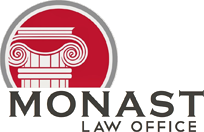 Your fingers tingle and ache. Sharp pain shoots from your elbow down your forearm whenever you grip a tool, turn a doorknob, or even shake someone's hand. What started as mild discomfort after long shifts is now debilitating pain that makes it difficult to perform your job duties or enjoy your favorite activities. The doctor says you now have tennis elbow—not because you spent too much time on the court, but because of repetitive workplace motions.
Your fingers tingle and ache. Sharp pain shoots from your elbow down your forearm whenever you grip a tool, turn a doorknob, or even shake someone's hand. What started as mild discomfort after long shifts is now debilitating pain that makes it difficult to perform your job duties or enjoy your favorite activities. The doctor says you now have tennis elbow—not because you spent too much time on the court, but because of repetitive workplace motions.
At Monast Law Office, we regularly help Columbus workers understand their rights to pursue Ohio workers' compensation. Let’s review how you can receive proper medical care and financial support while you recover from tennis elbow.
What’s Tennis Elbow and How Does It Happen at Work?
Tennis elbow, medically known as lateral epicondylitis, is a painful condition affecting the tendons that connect your forearm muscles to the bony prominence on the outside of your elbow. When these tendons become inflamed or develop small tears due to overuse, that’s the reason you’re feeling pain from your elbow to your wrist and fingers.
Despite its sports-related name, tennis elbow frequently occurs in workplace settings with tasks that require:
- Repetitive gripping. Plumbers tightening pipes, mechanics using hand tools, and retail cashiers scanning items experience constant tension in their forearm muscles.
- Twisting movements. Electricians turning screwdrivers, automotive technicians using wrenches, and food service workers opening jars put rotational stress on the elbow tendons.
- Computer use. Programmers coding for hours, graphic designers using drawing tablets, and administrative assistants navigating spreadsheets maintain static wrist positions that strain their forearms.
- Assembly line work. Manufacturing employees performing repetitive attachment tasks, meat processing workers cutting with the same motion, and electronics assemblers soldering components make identical movements hundreds of times daily.
- Painting and decorating. Professional painters using rollers and brushes, drywall finishers sanding surfaces, and wallpaper hangers smoothing materials make repetitive arm extensions.
- Musical performance. Professional musicians, especially string players, pianists, and drummers, make precise, repeated movements that can overwork the same tendon attachments.
- Textile work. People operating sewing machines, upholstery workers pulling fabric tight, and textile cutters using shears perform repetitive forearm contractions.
- Food preparation. Chefs chopping ingredients, bakers kneading dough, and butchers cutting meat make forceful, repetitive motions with knives and other tools.
- Health care procedures. Dental hygienists scaling teeth, massage therapists applying pressure, and sonographers manipulating ultrasound wands use precise, repeated hand movements.
- Warehouse operations. Package handlers sorting items, inventory specialists scanning products, and shipping clerks taping boxes perform continuous lifting and gripping motions.
Tennis elbow is classified as a repetitive strain injury because it typically develops gradually over time rather than from a single incident. The repeated stress on the same muscles and tendons causes microscopic tears that, without proper rest and treatment, build up and lead to severe inflammation and pain.
How Ohio Workers' Compensation Covers Tennis Elbow
The Ohio Bureau of Workers' Compensation (BWC) recognizes lateral epicondylitis as a compensable condition when it arises from work activities. However, proving that your tennis elbow is work-related sometimes presents challenges.
To qualify for workers' compensation benefits, you must establish that your tennis elbow developed as a direct result of your job duties. This requires medical documentation from a health care provider confirming your diagnosis and connecting it to specific workplace activities.
Unlike traumatic injuries, where the cause is obvious, repetitive strain injuries that develop over time means the BWC may initially question whether workplace activities or outside hobbies caused your tennis elbow. This is where detailed medical documentation and the assistance of our Columbus workers' comp lawyer, Jim Monast, make a considerable difference in your claim's success.
Once approved, workers' comp benefits for tennis elbow typically cover necessary medical treatments. You may also qualify for temporary total disability benefits if your condition prevents you from performing your job duties during recovery.
Possible Tennis Elbow Treatment Options Covered by Workers' Comp
When your claim is approved, the Ohio BWC covers various treatment approaches based on medical necessity. Your recovery journey typically includes several stages of care, such as:
- Rest and activity modification. Your doctor may recommend temporarily avoiding movements that trigger pain, and your employer might need to provide ergonomic equipment or reassign you to different duties that won't aggravate your condition.
- Physical therapy sessions. A therapist will guide you through specialized stretching and strengthening exercises specifically designed for lateral epicondylitis to promote healing while building resistance against future injury.
- Anti-inflammatory treatments. For persistent symptoms, your doctor might recommend steroid injections to reduce inflammation or newer regenerative therapies like platelet-rich plasma injections that use components from your own blood.
- Surgical intervention. In severe cases that don't respond to conservative approaches, surgery may become necessary to remove damaged tissue and reattach healthy tendon to bone, allowing for proper healing.
- Supportive devices and medication. Throughout recovery, workers' compensation typically covers prescription pain medications and specialized braces or splints that support your arm while tissues heal.
Need to know more about what to expect from the BWC when you have tennis elbow? Download our free book, The Workers’ Guide to Injury Compensation in Ohio, and take a moment to listen to Jim explain more of the process. Also, don’t hesitate to arrange for a no-obligation consultation if you have any questions.
